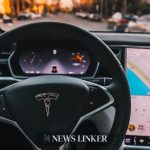As Tesla navigates through the complexities of rolling out its Full Self-Driving (FSD) technology globally, the conversation intensifies around its implementation strategies and adaptability across different international markets. During a recent earnings call, Tesla executives discussed the challenges and approaches to deploying FSD beyond the United States and Canada, where it is currently available. This discussion highlighted Tesla’s reliance on FSD as a pivotal component in its future growth strategy, emphasizing the system’s capability to function across diverse driving environments without significant modifications.
Comparative Analysis of International Deployment
Tesla’s approach to international expansion of its FSD technology is based on an end-to-end neural network that mimics human learning patterns, allowing the system to adapt to various driving conditions. Elon Musk, Tesla’s CEO, likened the technology’s flexibility to a human’s ability to drive in different countries using their inherent driving skills. The CFO, Vaibhav Taneja, further elaborated that while some local adaptations are necessary, especially in countries with distinct traffic regulations like China, these modifications are not extensive.
Market Expansion and Consumer Anticipation
The eagerness for FSD technology in markets like China and Europe is significant, with many Tesla owners already having invested in FSD capabilities for their vehicles. The delay in deployment in these regions has heightened anticipation and curiosity about how the autonomous system will conform to local driving norms and regulations without compromising on performance and safety standards.
Broader Industry Perspective
Looking at similar technologies in the industry, articles from sources like Forbes in “The Race for Autonomous Driving: Who is Leading the Pack?” and Reuters in “Global Tech Giants to Pump Millions into AI for Autonomous Vehicles” shed light on how other companies are also investing heavily in autonomous driving solutions. These articles discuss the competitive landscape of autonomous technology, where major tech giants are not only enhancing their systems but also rigorously testing them across different geographies, similar to Tesla’s ongoing efforts with FSD.
Scientific Insights on Autonomous Vehicles
Research published in the Journal of Artificial Intelligence and Technology, titled “Neural Networks’ Role in the Next Generation of Autonomous Vehicles,” explores the technical underpinnings that make neural networks ideal for autonomous navigation. Researchers argue that the success of these systems hinges on their ability to make split-second decisions akin to human reflexes, a principle that Tesla’s FSD technology also leverages.
Core Inferences
- Tesla’s FSD technology uses advanced neural networks.
- Adaptations for country-specific traffic rules are minimal yet crucial.
- The global demand for Tesla’s FSD is robust and growing.
Tesla’s strategic maneuvers to enhance and deploy its Full Self-Driving technology globally underscore the company’s innovative edge in the automotive industry. The tech giant remains steadfast in its commitment to refining FSD, ensuring it aligns with the varied and complex traffic ecosystems across the globe. This commitment not only promises to expand Tesla’s market reach but also bolsters its reputation as a leader in autonomous driving technologies. For potential users and investors, these developments suggest a future where Tesla’s FSD could become as ubiquitous and versatile as the vehicles themselves.










